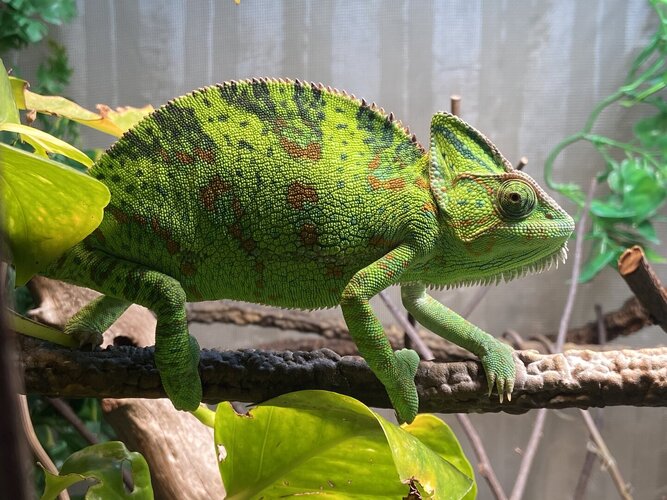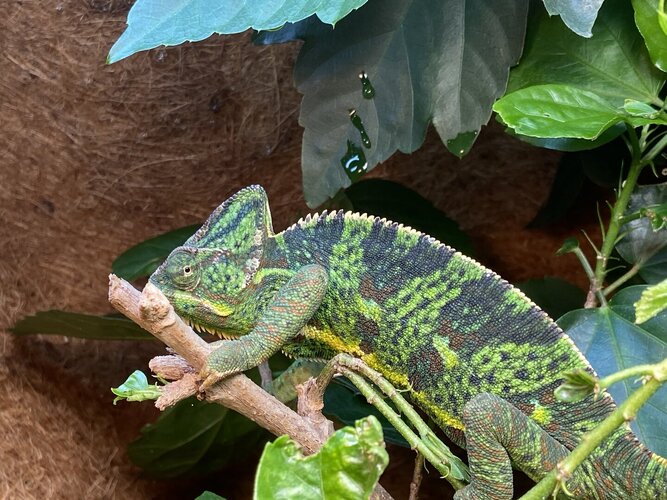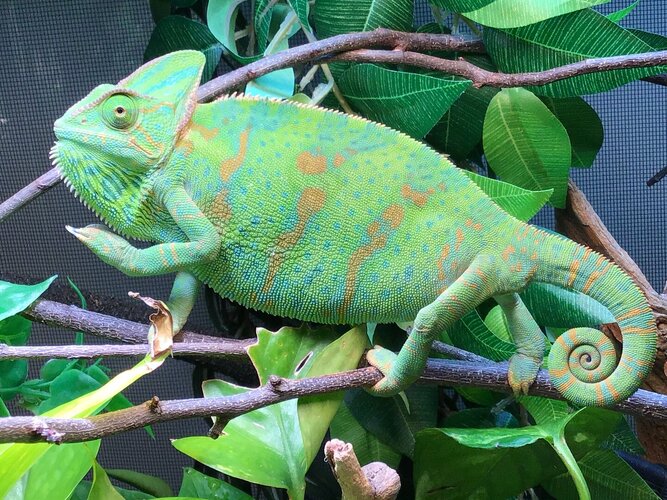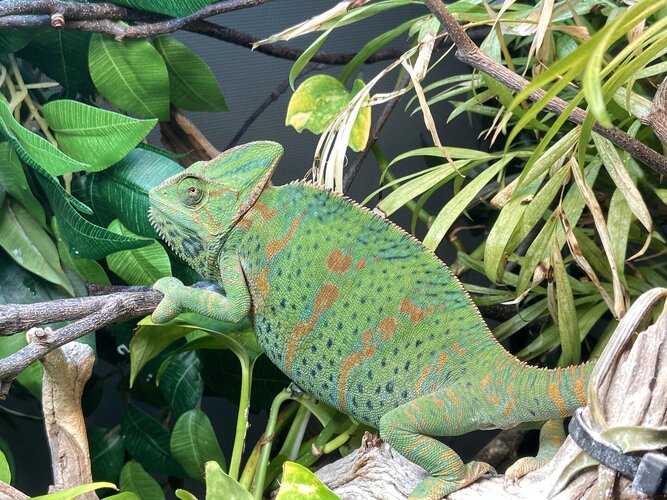bbyoda
Chameleon Enthusiast
Thank you so much for your response and support. This community has been a godsend long before I signed up and posted when I was still figuring chameleon care out. What enclosure did you use for a temporary setup? Or did you use your initial enclosure but sterilized and gutted of infectous material?
I used my initial enclosure after removing everything, cleaning the entire cage, and replacing with new sticks.
My worry is that any sticks I put in there while she's infected could get contaminated. On several occasions she's had a ton of clear mucus in her poop and she's smeared it all over her sticks while she walked. I've bought flukers vines for easy sterilization but I worry about her infecting her screen cages when she almost inevitably climbs them in her protest of a substandard smaller cage.
I didn't change out the sticks or pothos during Yoda's quarantine period, but he was pooping in one spot on the floor. I would say just get a bunch of branches and swap them out if they get pooed on.
- Did your guy climb screens when he was in treatment?
Yes, it didn't seem to matter. I did wipe down the screen to start though.
- How much did you handle him/let him out of his quarantine enclosure while in treatment if at all?
I had to handle him to give him meds. Otherwise I left him alone.
- How long did it take him to be cleared of coccidia? My vet said we'd do another fecal test in two months but her coccidia medication is two doses 48 hours apart. (Pinworm is 3 doses 10 days apart so a month)
It took a couple months and we did two fecal rechecks to make sure the treatment worked. You'll find out at the next fecal if yours is on the right path.
- Was he mad at you and was there any way to make it a little easier on him?
He was mad. I just got better at giving meds faster and with more confidence. Him being feisty is a good sign though! Means he's got some fight in him










